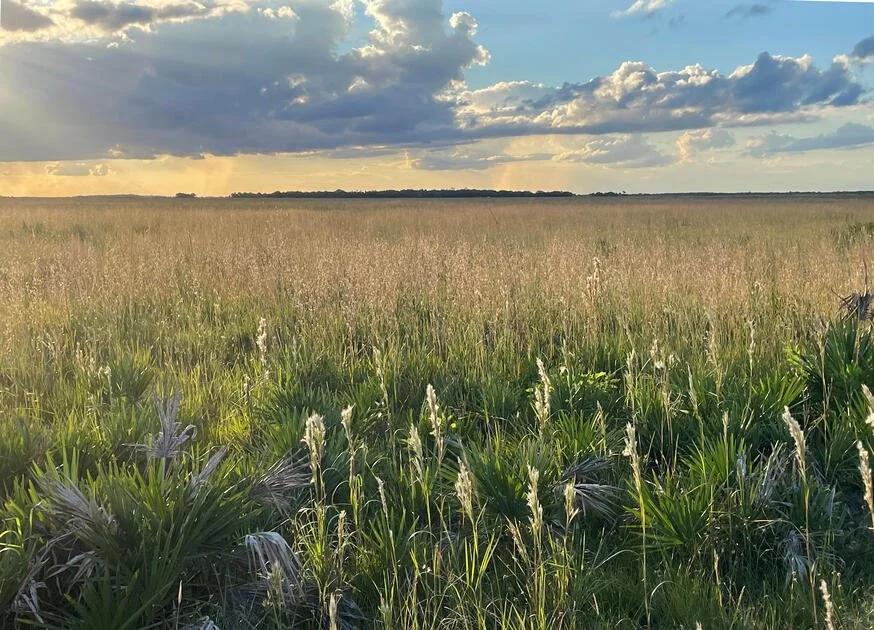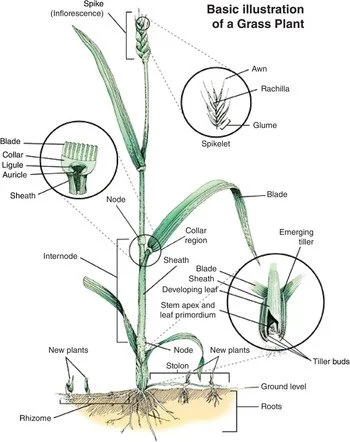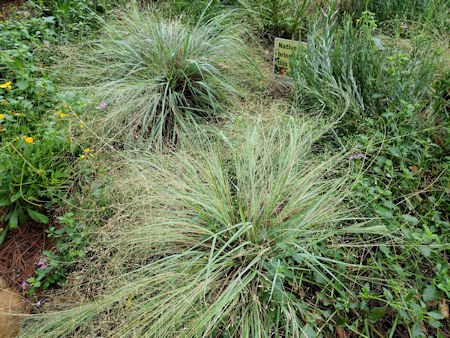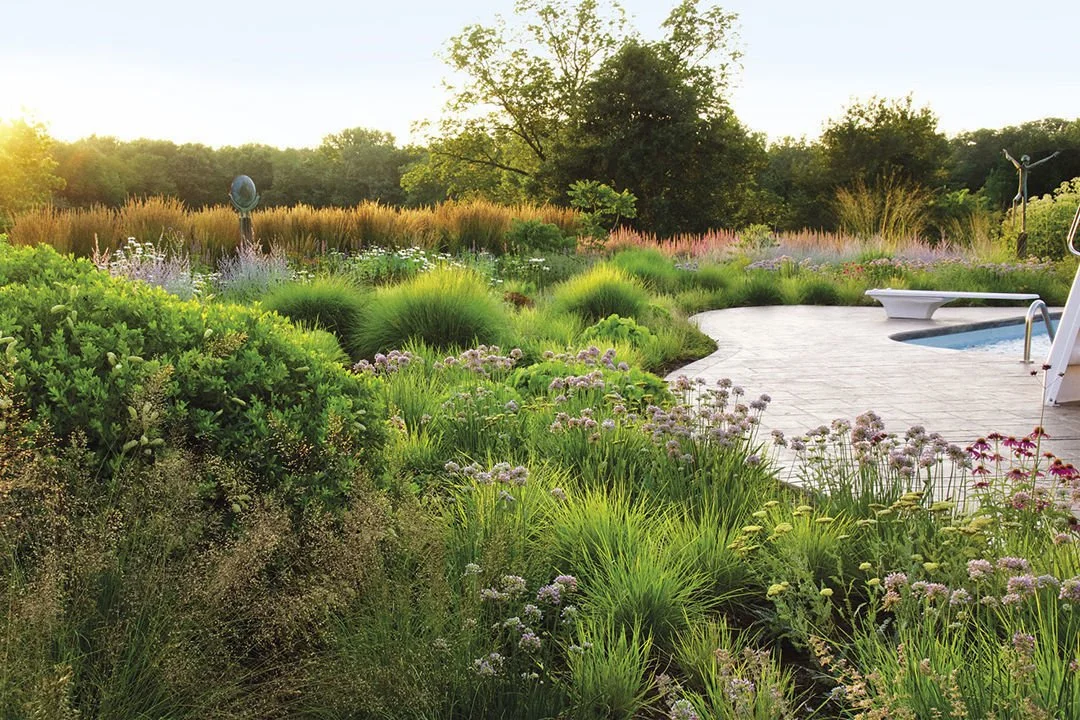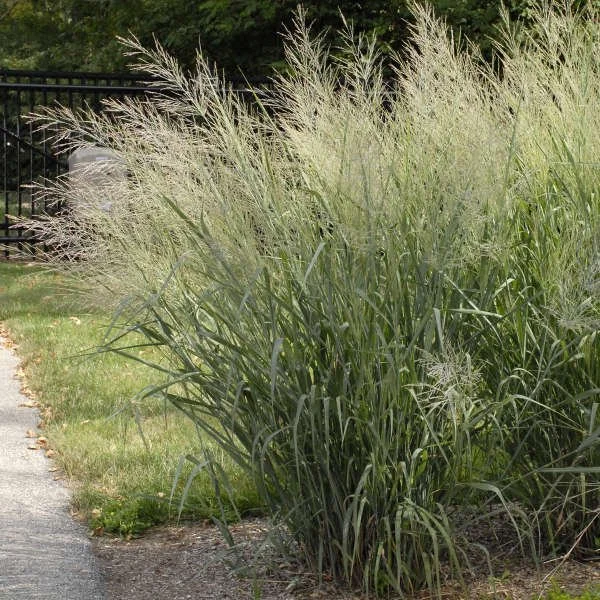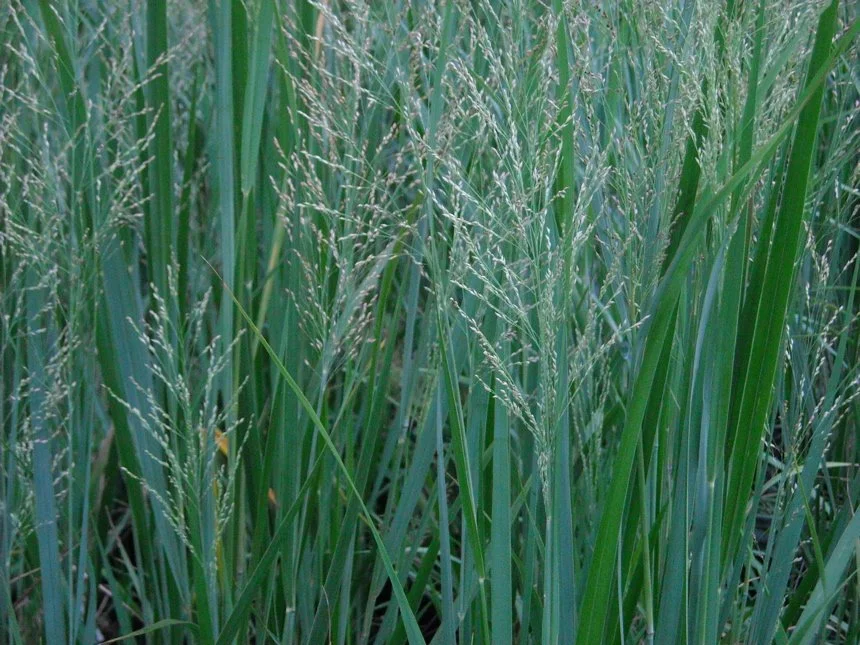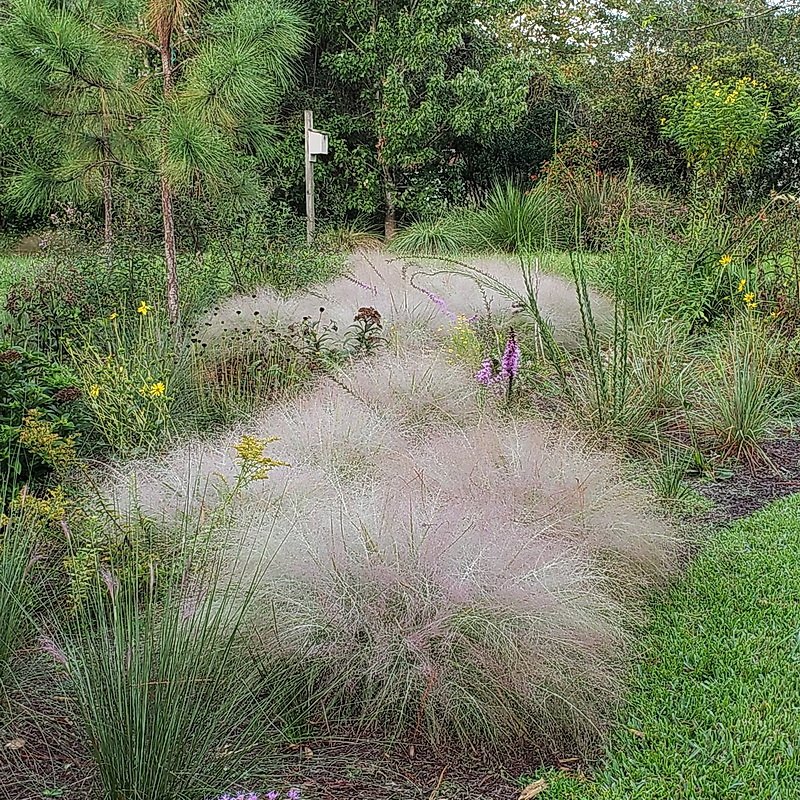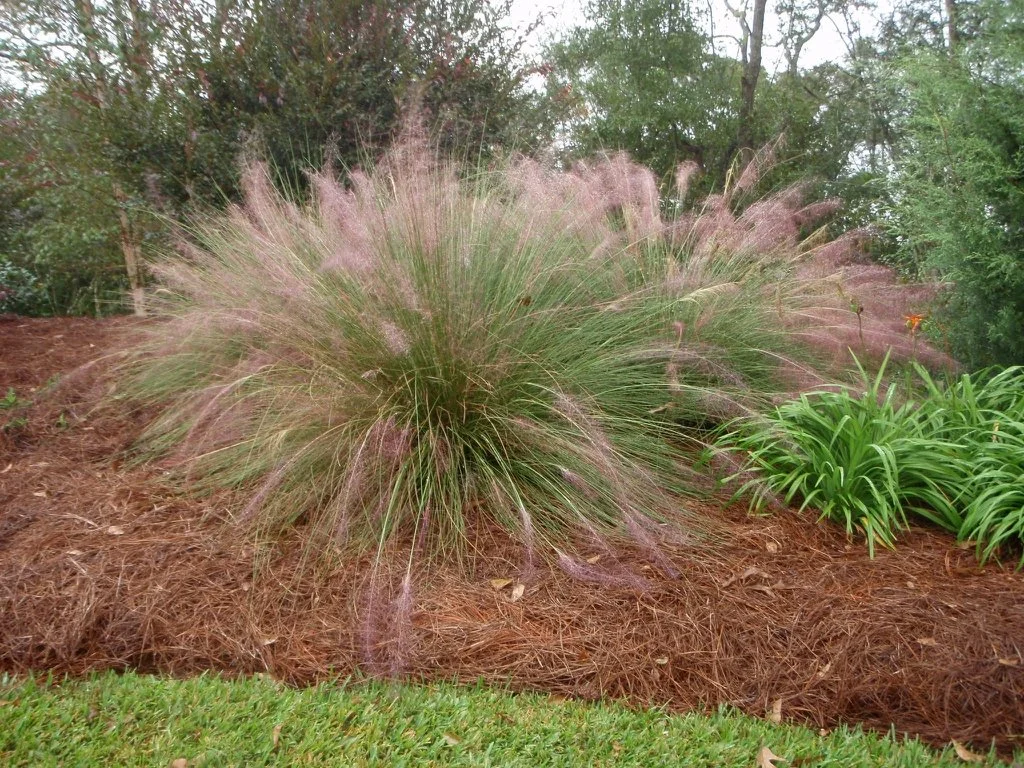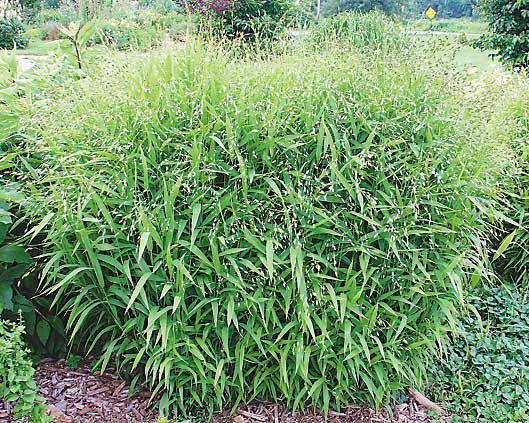NICK’S PICK: MEADOW GRASSES
Meadow Grasses to Use in Your Landscape
Grasses perform numerous functions in the landscape and can be both functional and inspiring, read on to find out more about the best options for Florida gardeners!
Muhly grasses blooming in a landscape, image credit: S. P. Turnipseed via FNPS website
Perennial grasses often conjure feelings and associations with savannah or prairie landscapes of the southeast and mid-west and make us feel grounded, safe and add an indescribable textural element to the landscape that can only be personally experienced. Functionally, grasses provide numerous benefits to the landscape which we will explore more deeply but to make it simple they are the backbone of a healthy landscape.
Kissimmee Preserve State Park, image courtesy of Audubon Florida
What is a perennial grass? A perennial grass or simply perennial, is a plant that lives more than two years. The term is often used to differentiate a plant from shorter-lived annuals and biennials. Grasses are herbaceous monocots and can be an annual or perennial, we will only explore perennials in this article
Image courtesy of Cambridge University Press
Functional Values of Meadow Grasses:
Stabilize and build soil. Grasses have a deep network of roots that bind the upper soil horizon together, which prevents runoff and enriches the soil through its growth/dormancy cycle.
Carbon capture. Grasses may seem like a poor carbon sink as the upper grass blades are low in biomass but the large network of roots captures and stores tremendous amounts of carbon in the soil. This is why prairie soil is and has been preferential for agricultural sites-rich soil!
Increased water infiltration. Runoff is a huge issue in our modern landscapes and a costly one at that! Perennial grasses permit the retention and absorption of rainfall into our groundwater and aquifers. This is only true however of deep rooted perennial “prairie” grass. Turf grass does not offer these same benefits as their roots are often shallow and perpetually stunted.
Image courtesy of Dyck Arboretum
Ecological Value of Meadow Grasses:
Host plants. Many grasses are the host plant for moths and butterflies, which in turn become meals for other animals in the food chain.
Cover. Grasses can be the perfect habitat for creatures to seek shelter or raise their young.
Food. Grasses and their seeds provide food to numerous birds and other animals.
Eragrostis elliottii, by Jan Allyn. Elliott’s lovegrass is a larval host for the Zabulon skipper and the seeds provide food for invertebrates and small birds.
Landscape Value of Meadow Grasses:
Aesthetics. Grasses used in mass or as focal points in a matrix of other plants can create an otherworldly feeling to the landscape plan as a whole. The varying textures, tones and seasonality of grasses creates the “drama” that other forbs and perennial plants can not provide.
Green mulch. Grasses are often seasonal with most being warm season species in our area. The “dead growth” of these grasses can be cut back in later winter and used as a mulch in your garden, reducing the need for external mulch input.
Weed prevention. Dense plantings and the use of grasses functions like a natural ecosystem and creates competition that helps reduce the intrusion of aggressive and unwanted weeds.
Low cost and low maintenance. Grasses are a wonderful way to keep initial planting and maintenance costs low. Generally they can be purchased in a small containers and reach their potential size in one growing season. In terms of maintenance grasses need little more than a haircut after each growing season.
A beautiful example of how grasses can be incorporated in matrix plantings
Here are some of our favorites to use in landscape installations:
First up, Switchgrass, a valuable soil protection cover crop. It binds loose soils and provides valuable wildlife habitat.
Panicum virgatum, Switchgrass
Origin: native, statewide, mixed habitats
Size: 3-5’ depending on cultivar
Color: Shades of green
This powerhouse is a favorite of ours to use for a bold accent in a meadow planting, in narrow spaces between walkways/structures and in mass as a background plant. This grass is very drought tolerant, and easy to maintain. The numerous cultivars available provide a palette of options to choose from for different colors/texture. Below are some of our favorite varieties: “Heavy Metal, Dallas Blues, Northwind”
Panicum virgatum 'Heavy Metal'
Panicum virgatum 'Dallas Blues'
Panicum virgatum 'Northwind'
Our second favorite is Creeping Bluestem, the dominant Schizachyrium species throughout most of Florida that spreads by rhizomes and forms colonies.
Schizachyrium stoloniferum, Creeping Bluestem
Origin: native, statewide, uplands
Size: 2-3’
Color: Silver-glaucus
An important grass of upland savannahs that translates well into the garden. This grass is useful as a dominant perennial between clusters of flowers and other forbs or planted in large drifts for its dramatic color. This is a superior grass to use for attracting wildlife and its drought resistance. Other species in the genus such as little bluestem is another excellent choice with lots of unique cultivars available.
Schizachyrium scoparium (Little Bluestem, Prairie Beard Grass)
Last up is Elliott’s and Purple lovegrass, which grow wild in flatwoods, sandhills, and prairies. As native species, these are excellent choices for a wildlife-friendly landscape. Both species make excellent borders & accent plants and are very attractive in massed plantings.
Image credit: Janet Bowers via FNPS website
Eragrostis spectabilis/elliottii, Purple/Elliott’s lovegrass
Origin: native, statewide, uplands
Size: 3’ spread Purple, 2’ spread Elliott’s
Color: Silver-glaucus for Elliott’s, light green/purple for Purple love grass
A widely popular selection and for good reason. Both Purple and Elliott’s love grass provide the visual interest needed in gardens but also serves as an ideal “filler” perennial to create a cohesive meadow. Given that they are low growing, they also are ideal in the foreground of a planting or near walkways. Both have dramatic cloud like florets in the fall that can leave even the most traditional gardener in awe.
Image credit: Wendy Wilber, UF/IFAS
Others worth mentioning are: Muhlenbergia capillaris, Tripsacum dactyloides, Tripsacum floridanum, Tridens flavus, Spartina bakeri, Andropogon spp, Chasmanthium spp, Aristida spp
Muhlenbergia capillaris (Gulf Muhly, Hairgrass, Mule Grass, Pink Hair Grass, Pink Muhly, Pink Muhly Grass, Purple Muhly)
Tripsacum dactyloides (Eastern gamagrass, Fakahatchee grass)
Tripsacum floridanum (Dwarf Fakahatchee grass)
Tridens flavus (Grease Grass, Purpletop Tridens, Redtop Tridens, Tall Redtop Tridens)
Spartina bakeri (Sand cordgrass, Baker’s cordgrass, Bunch Cordgrass, Marsh Grass)
Andropogon spp includes various species of bluestem and is a widespread genus of plants in the grass family.
Chasmanthium spp includes Chasmanthium latifolium (River or Wild Oats, Northern Sea Oats, Indian Woodoats, Spikegrass) which is a Florida native.
Aristida spp includes Aristida stricta (Carolina Wiregrass, Pineland Threeawn, Wiregrass), a great option for Florida landscapes
Curious about how you can incorporate meadow grasses into your landscape? We are happy to help, contact us to schedule a consultation today!


